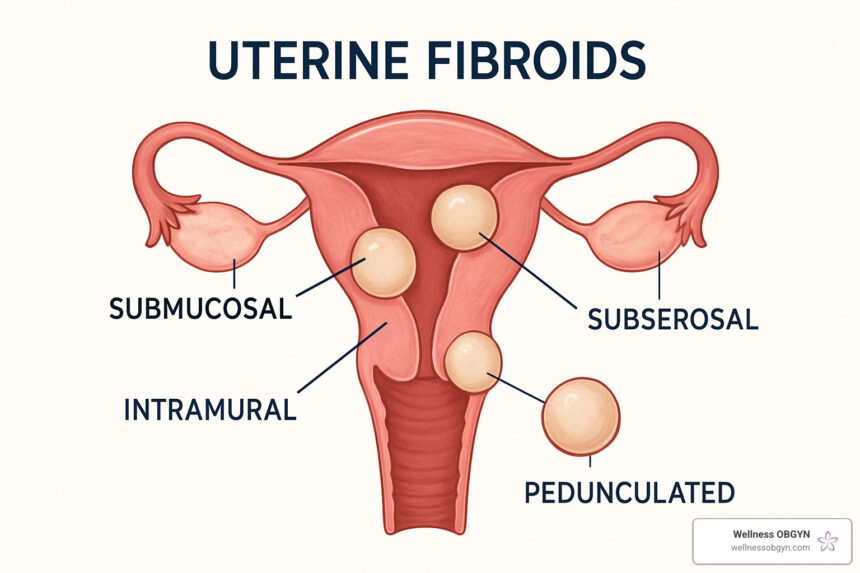Uterine fibroids are growths that develop in or on the uterus. These growths are made of muscle and connective tissue from the uterine wall. Understanding what they are and how they are addressed is a key step in managing your health, because it helps you to navigate healthcare better and make informed decisions. Here is more information about the types of fibroids, their potential health impacts, and available treatment pathways:
What Are Fibroids?
Fibroids are categorized based on where they grow within the uterus. This classification helps healthcare providers understand their potential symptoms and determine appropriate management strategies. The following types of growths may appear:
- Subserosal fibroids: These grow on the outside of the uterus, called the serosa. Because of their location, they can grow large and press on nearby organs, like the bladder or rectum.
- Intramural fibroids: This type develops within the muscular wall of the uterus. They might expand, which can stretch the uterine wall.
- Submucosal fibroids: These grow just underneath the uterine lining and can extend into the uterine cavity. Even small growths may cause heavy bleeding and other issues.
- Pedunculated fibroids: When a subserosal or submucosal fibroid develops a stem-like base that attaches it to the uterus, it is called pedunculated. This stalk allows the fibroid to move, sometimes twisting, which may lead to pain.
How Do They Impact Health?
People with this condition may experience no symptoms at all. For others, the size, location, and number of fibroids can lead to a range of health effects. Symptoms typically relate directly to where they are located. Fibroids pressing on the bladder may cause frequent urination.
Typical symptoms associated with uterine fibroids include heavy or prolonged menstrual bleeding, which sometimes results in anemia. Individuals may experience pelvic pain or pressure, a feeling of fullness in the lower abdomen, or lower back pain. Depending on their placement, these might also interfere with fertility or cause complications during pregnancy.
What Are the Treatment Options?
If treatment becomes necessary, several options are available. The approach taken typically depends on the severity of symptoms, the characteristics of the fibroids, your age, and your personal health goals. A discussion with a healthcare provider will help you navigate the choices and find a path that aligns with your needs.
One minimally invasive procedure is uterine fibroid embolization (UFE). During UFE, small particles are injected into the arteries supplying blood to these growths. This aims to block the blood flow, causing these growths to shrink and symptoms to lessen.
Surgical options for fibroid removal may also be available, providing several options. A myomectomy is a procedure to remove the fibroids while leaving the uterus intact. The selection of a specific treatment is a collaborative decision, and it is made between you and your doctor.
Get Treated for Fibroids
Understanding the types of these growths and the available treatments gives you the power to take the next step. By working with a medical professional, you can explore a personalized plan to manage your symptoms and improve your quality of life. If you are experiencing symptoms that you believe are related to this condition, seek a medical evaluation. Schedule a consultation with a specialist today to discuss your diagnosis and find the right treatment pathway for you.














